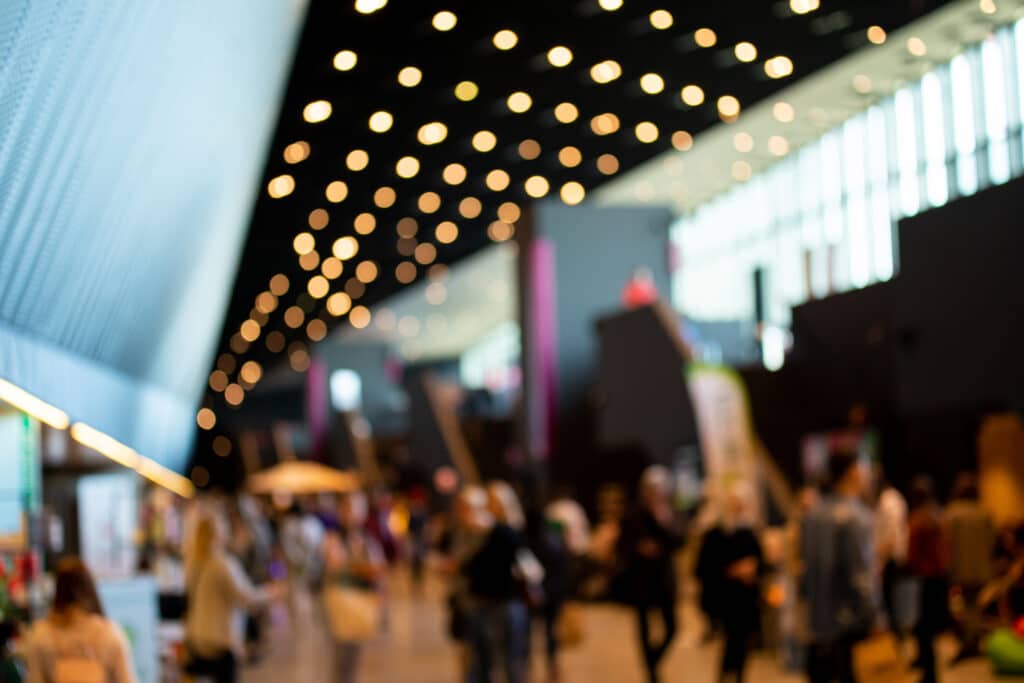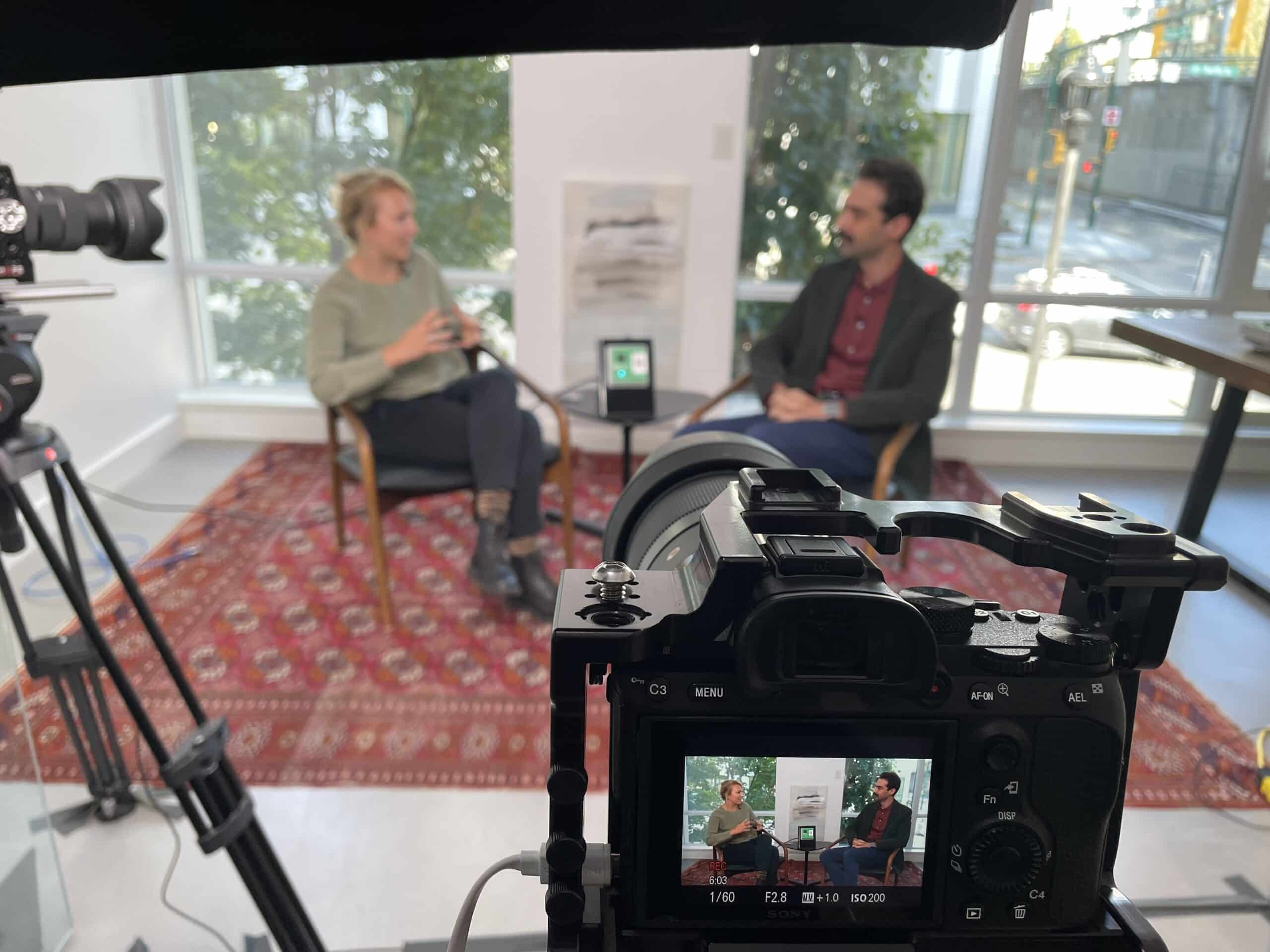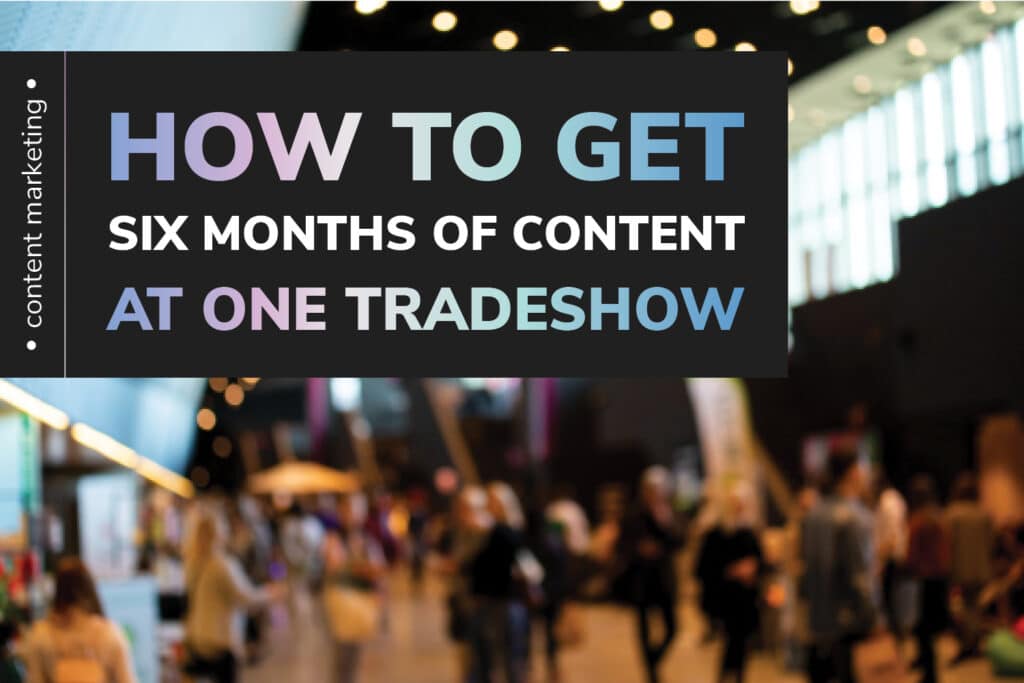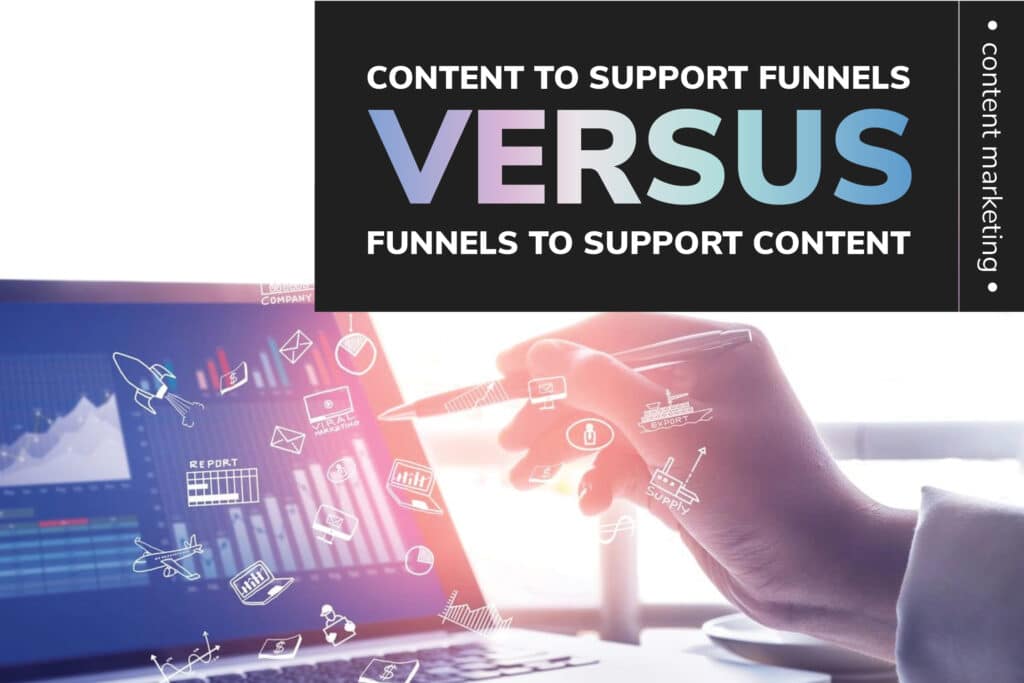Trade shows are a major part of the marketing mix for many companies. They are a significant source of new buyers and revenue pipeline.
Given the significant expense, the short window of time to produce ROI can be a problem.
What if you had a way to dramatically increase the window to produce ROI?
Consider the number of industry experts, buyers, and partners who are attending these shows. Interviewing these attendees is your chance to create a much more compelling presence during and after the show.
By including a video crew with your marketing and sales teams you can use the opportunity to capture thought leadership content.
If you are struggling to produce enough original content to support your social campaigns, follow these easy steps to generate six months’ worth of content from each trade show.
Three ways to shoot your content
There are three main variations of how you can set up to capture great content at trade shows.

Run and Gun – One camera, a camera and audio operator plus an interviewer – this is the simplest way to do interviews and can be done in your booth, on the show floor and outside breakout sessions. It is relatively easy to find local videographers that will have all of the equipment so you won’t need to fly a crew to each show. Your host can be recruited from your sales and marketing team.
A studio in your booth is a great attention getter for passing buyers. This can be as simple as a table with two chairs for the host and one guest. Since background noise is likely to be an issue, it helps to have the tradeshow in the background of the shot so your audience will understand where the noise is coming from. Decent lavalier microphones should isolate the speakers enough to get high quality audio.
- A private room gives you the most control over the set, camera placement and background noise. A hotel suite that is connected to the conference center is one option. Also, conferences often have private meeting rooms that are available to rent. Keep in mind that the farther from the trade show floor you are, the more difficult it will be to get guests to make the trek. If you are going to the trouble of having a dedicated studio, it usually makes sense to consider a three camera setup. One camera with a closeup of each guest plus a wide shot of both.
Sourcing guests to interview is as easy as mining the speaker list
Organizers of trade shows have spent years curating lists of speakers that are the most relevant to attendees of the conference. In other words, your buyers are interested in the topics of the sessions.
These speakers will always be interested in being interviewed in order to create content for their own portfolios and social media.

We discovered this many years ago when we set up a studio at a famous tech conference series. Some of the organizers predicted that the speakers would be too busy to do an interview. The opposite turned out to be true. We had a lineup outside the studio at the very first conference.
It helps to contact speakers ahead of the conference in order to prepare them.
Some conferences offer exhibitor packages that include access to the attendee lists. This can also be used to source potential guests.
If you are a conference organizer, consider including a studio as part of the conference setup. It will enhance your ability to attract top speakers and provide you with a rich stream of content to promote future events.
Coproducing the show with partners
Certain partners will share the same buyer avatar as you. Like every seller, partners need content to fill channels such as their LinkedIn and Instagram. Certain partners will be happy to share the cost and logistics of content production.
There are three main benefits to co-producing your show with a partner;
The first and most obvious is cost sharing. At the end of the show you will end up with the same amount of content for half the cost.
Access to your partner’s network to attract guests is another benefit that will enhance the caliber and relevance of the show.
Distribution of the content through your partner’s networks will improve the reach of your content.
Having a formal process in place for producing, sharing and distributing this co-produced content is very important. Issues such as how long it takes to complete post production can create friction in the relationship unless clearly communicated up front.
Long-form content
The usual and easiest format for this content will be long form interviews. This can range from minutes into hours depending on the topic and the guest.
As with any content strategy, preparation is key. Having a standard set of questions for each guest repeated over and over gets boring. Since the guests are speaking at the event, it should be easy to research their backgrounds and topics and have more personalized questions prepared.
Remember that the content is intended to engage your audience so having your customer avatars at the ready is super important. Communicating this clearly to the guest is part of the preparation. ‘What can you tell our listeners about…’ is a good framework to keep in mind.
Breaking the interview into stand-alone segments will also help you with the content packages discussed next.
Our experience with the potential output from a trade show is;
10+ interviews per day
The average length of 20 to 50 minutes
BRoll coverage of the trade show to enhance post-production
A three-day conference could give you 30+ long-form segments.
In the next section, we talk about how to turn this long-form content into dozens of short-form segments that will keep you posting for months to come.
Producing content packages for every long-form segment
The key to the success of this strategy is supporting the long-form content with a package of short-form content in order to extend the life and reach of each segment.
An example of a content package is:
A long-form 40 minute interview
A written blog is taken from the long-form transcript
LinkedIn video posts of each subsegment
An Instagram carousel that illustrates each of the subsegments
Stories
Shorts
There are 24 weeks in a quarter so our estimated 30 segments is more than a post per week.
Your output of short-form content will easily support one or more posts per day for an entire quarter.
Post-production and posting cadence
With reasonable preparation, shooting the shows happens in real-time and is without a bottleneck. In other words, you can expect to end the trade show with 30 to 40 hours of interviews recorded on one to three cameras. Make no mistake, this is a lot of media.
An efficient post-production process will ensure a smooth transition from the excitement of the interviews at the trade show to actually posting a finished product.
Following is a list of the essential components needed to crush post-production:
Episode Guide – what is the look and feel of the show
Graphics Package – lower thirds, transitions
BRoll
Content Package Templates –
- Editing capacity and workflow
Review and approvals
One option to avoid the post-production crunch is live streaming where you actually produce and stream the finished show in real-time. We will cover live streaming in a different blog as there are many additional considerations.
If you have an appetite for this type of production scale, we usually recommend easing into live streaming after mastering pre-recorded programming.
Guest and partner distribution
Providing your guests with a finished interview is the payoff for their participation.But it doesn’t stop there. Giving them a package for their social media will increase traffic for them and for you. Following through with each guest is critical to leveraging an ever expanding network and building your audience.
As mentioned above, partners provide access to a potentially more strategic network of buyers. Make sure to schedule a regular series of editorial meetings to discuss content and distribution strategies.
Monitoring and tracking
Your long-term content strategy success depends on developing measurable KPIs and tracking your progress toward achieving them. We have another blog that discusses how to set these up and recommend that you check it out.
Conclusion
Trade shows offer a significant opportunity for companies to generate a wealth of content that can sustain their marketing efforts for six months or more.
By leveraging the presence of industry experts, buyers, and partners at these events, companies can capture valuable thought leadership content through interviews and discussions.
There are three main ways to shoot content at trade shows: using a single camera with an audio operator and interviewer, setting up a studio in the booth for attention-grabbing interviews, or opting for a private room for more control over the set. Sourcing guests for interviews is relatively easy by mining the speaker list provided by the conference organizers or partnering with relevant exhibitors who share the same target audience.
Co-producing the show with partners offers benefits such as cost sharing, access to their networks for attracting high-caliber guests, and wider distribution of the content through their channels. Long-form interviews are the primary format for this content, but preparation and personalized questions are key to engaging the audience. Breaking the interviews into stand-alone segments and capturing B-roll footage of the trade show enhances production values.
To extend the life and reach of each long-form segment, it is essential to create content packages that include written blogs, LinkedIn videos, Instagram carousels, stories, and shorts. With an estimated 30 segments from a three-day conference, this strategy can support consistent posting for an entire quarter or more.
Effective post-production and a well-defined posting cadence are crucial to successfully manage the large volume of media generated at trade shows. Live streaming can be an option to consider, but mastering pre-recorded programming is recommended before venturing into live streaming.
Distributing the finished interviews to guests and partners is essential, and providing them with content packages for their own social media amplifies the reach and benefits for both parties. Regular editorial meetings with partners can help strategize content and distribution plans.
Lastly, monitoring and tracking key performance indicators (KPIs) are vital for measuring the success of the long-term content strategy. Setting up measurable goals and tracking progress will enable companies to refine their approach and achieve their marketing objectives.
By following these steps, companies can maximize their investment in trade shows and harness the power of content marketing to drive long-term success.





